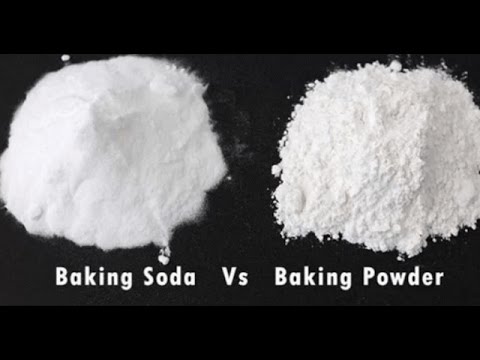Facts about Flour, Sugar & Salt Used in Bakery
Bread is a staple food in all over the world and made from flour and water dough with yeast, which is fermented, kneaded and baked in the oven. The action of yeast gives bread its characteristic texture and flavour.
Bread may be leavened by processes such as reliance on naturally occurring sourdough microbes, chemicals, industrially produced yeast, or high-pressure aeration. Commercial bread commonly contains additives to improve flavor, texture, color, shelf life, nutrition, and ease of manufacturing.
The following ingredients are necessary for bread making
Main Ingredients
- Flour
- Yeast
- Sugar & Salt
- Fats & Oil
Other Raw Materials
- Eggs
- Fruit & Nuts
- Milk Powder
- Oxidizing agents/Bread improvers- such as ascorbic acid, Potassium Bromate, Anti staling agents etc to enhance dough strength loaf volume & stiffness.
Importance & Role of Wheat Flour in Bakery
Wheat flour is a powder made from grinding wheat, making is usable for human consumption. There are different types of wheat flour, distinguished by the amount of gluten they contain, their color, the parts of the grain used, and the type of wheat. Wheat flour is an essential ingredient in bread, cakes, cookies, and most baked goods.
Wheat flour is made from grinding up parts of the wheat grain. There are three main parts of the grain:-
| 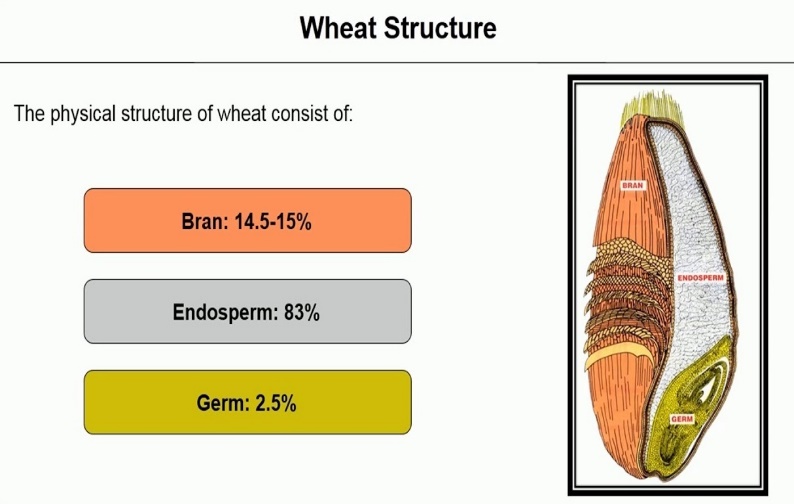 |
| Stacrch-74% Moisture- 14% Protein (Gluten)-7-10% Protein(Soluble)- 1% Sugar- 2-2.5% Fat- 1% Ash (Mineral Salt)-0.5% |  |
White flour is made from only the endosperm.
Brown flour includes the germ and bran.
Whole grain flour includes all three parts.
Once each part has been separated, it is ground into a powder. White flour has a naturally yellow-ish color but is often bleached or mixed with oxidizing chemicals to produce a white color.
Classification of Wheat
Wheat can be classified in three ways:
- Colour (e.g., red, yellow, white)
- Planting season: spring wheat, planted in the spring and harvested in early fall; winter wheat, planted in the fall, harvested the following summer
- Characteristics of the grain: durum, hard bread wheat, and soft wheat. whether it is “hard” or “soft,” by the amount of protein it contains, and by the amount of a specific protein, called gluten that it contains.
Hard wheat is usually a bronze-color and has a higher gluten content than soft wheat, which is a light golden color.
Durum wheats: Durum wheats are generally high in gluten-producing proteins. They are, in effect, the “hardest” wheats. They are used for making semolina, which is made into macaroni and other pastas.
Hard wheats: Hard wheats include hard winter wheats and hard spring wheats. They contain more gluten-producing proteins than soft wheat, and are used for making bread flours and all-purpose flours.
Soft wheats: Soft wheats are low in gluten-producing protein. They are milled into cake and pastry flours.

Types of Wheat Flour: –
Wheat flour is the most common flour used in baking. There are different types of wheat flour, and they’re distinguished by the amount of gluten they contain.
Gluten is naturally occurring in the wheat. It’s the protein that gives baked goods structure. When the dough is kneaded, these glutens develop and become elastic. Strong flours are those made from hard, high-protein wheat. They have higher gluten content. Flours that are made from low-protein, softer wheat are called weak flour and have less gluten.
Example of Wheat flour-
All-purpose flour: – All-purpose flour is formulated to have a medium gluten content of around 12 percent or so. This makes it a good middle-of-the-road flour that can be used for a whole range of baking, from crusty bread to cookies to fine cakes and pastries. Even though all-purpose flour is a good general flour, most professional bakers don’t use all-purpose flour. Most professional bakers use either bread flour, cake flour, or pastry flour, depending on what they are baking.
 | 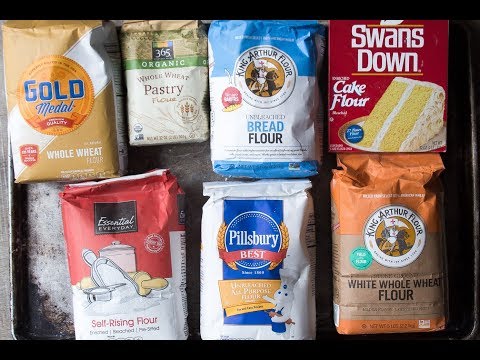 |
Bread flour: – Bread flour is a strong flour, meaning that it has a relatively high gluten content—usually around 13 to 14 percent. A handful of bread flour will feel coarse and will look slightly off-white. Bread flour is used for making crusty bread and rolls, pizza doughs, and similar products.
Cake flour: -Cake flour is made from soft wheat and has a lower gluten content—around 7.5 to 9 percent. Its grains are visibly finer than bread flour, and it is much whiter in color. Its fine, soft texture makes it preferable for tender cakes and pastries.
Pastry flour: – Pastry flour is slightly stronger than cake flour, at around 9 to 10 percent gluten. It can be used for biscuits, muffins, cookies, pie doughs, and softer yeast doughs. It has a slightly more off-white color than cake flour.
Self-rising flour:- Self-rising flour is peculiar. It’s ordinary all-purpose flour that has baking powder and salt added to it. Intended as a convenience, it’s anything but—the main problem is that there’s no way to control how much baking powder it contains.
Whole wheat flour: -Whole wheat flour comes in two varieties: 100 percent whole wheat flour and white whole wheat flour. One hundred percent whole wheat flour is made from hulled red wheat grain. It provides more fiber and other nutrients than all-purpose flour.
Generally speaking, it makes for heavier bread and baked goods and has a shorter shelf life than all-purpose flour. Whole wheat flour is often mixed with all-purpose flour for a lighter texture and better rising. While whole wheat flour is made from hulled white spring wheat, it has a milder taste and lighter color compared to 100 percent whole wheat flour.
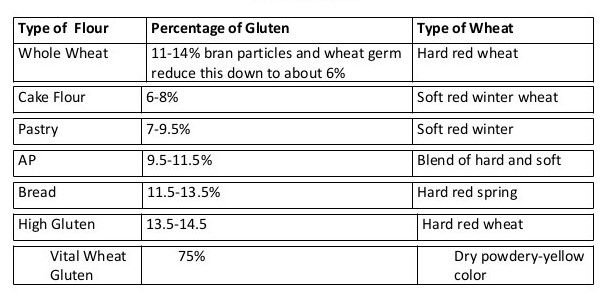
Importance & Role of Yeast in Baking
Yeast is an egg-shaped single-cell fungus that is only visible with a microscope and are found worldwide in soils and on plant surfaces and are especially abundant in sugary mediums such as flower nectar and fruits, which needs food, warmth, and moisture to thrive. To grow, yeast cells digest food and this allows them to obtain energy.
It converts its food—sugar and starch—through fermentation, into carbon dioxide and alcohol. It’s the carbon dioxide that makes baked goods rise and used in the production of bread, beer, and wine etc.
Basic Role of yeast in Fermentation: –
the yeast ferments the sugars in the flour and releases carbon dioxide. Because the dough is elastic and stretchable, the carbon dioxide cannot escape. The expanding gas causes the dough to inflate or rise. Yeast is also an essential ingredient in brewing beer. The yeast eats the sugar in beer and produces carbon dioxide and alcohol.

What Is Fermentation?
Fermentation is any metabolic process in which microorganisms’ activity creates a desirable change in food and beverages, whether it’s increasing flavor, preserving foodstuffs, providing health benefits, or more.
During the fermentation process, these beneficial microbes break down sugars and starches into alcohols and acids, making food more nutritious and preserving it so people can store it for longer periods of time without it spoiling.
Advantages of Fermentation-
Fermented foods are rich in probiotics, beneficial microorganisms that help maintain a healthy gut so it can extract nutrients from food.
- Probiotics aid the immune system because the gut produces antibiotic, anti-tumor, anti-viral, and antifungal substances, and pathogens don’t do well in the acidic environment fermented foods create.
- Fermentation also helps neutralize anti-nutrients like phytic acid, which occurs in grains, nuts, seeds, and legumes and can cause mineral deficiencies.
- Fermentation can increase the vitamins and minerals in food and make them more available for absorption. Fermentation increases B and C vitamins and enhances folic acid, riboflavin, niacin, thiamin, and biotin. The probiotics, enzymes, and lactic acid in fermented foods facilitate the absorption of these vitamins and minerals into the body.
Types of Yeast: –
There are two types of yeast available:
- Brewer’s yeast, a wet yeast used primarily in beer making
- Baker’s yeast, which is used as a leavening agent
Brewer’s Yeast:-Brewer’s yeast is an ingredient used in the production of beer and bread. It is made from Saccharomyces cerevisiae, a one-celled fungus. Brewer’s yeast has a bitter taste.
Baker’s Yeast: – Baker’s yeast, which is used as a leavening agent. There are then two types of baker’s yeast—
Fresh yeast and Dry yeast.
Fresh yeast- also called wet, cake, and compressed yeast comes in small square cakes that are made of fresh yeast cells. These blocks of fresh yeast, often used by professional bakers, are comprised of 70 percent moisture, and therefore are quite perishable.
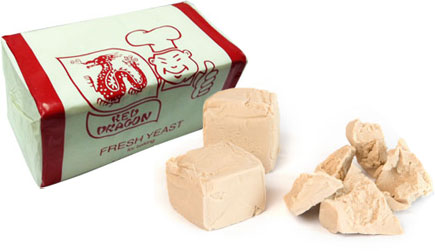 |  |
Dry yeast- There are two types of dry yeast: Active dry yeast and instant yeast. The only difference between the two is the size of the granules; active yeast has larger granules while instant has been ground into a finer texture. Instant is named as such because it can be added directly to other ingredients; it does not need to be dissolved in water before using as active dry yeast does. Active dry yeast is dormant until proofed, which occurs when it is dissolved in a small amount of lukewarm water (about 110 degrees Fahrenheit).
Instant yeast is also available as rapid or quick rising. This type of yeast includes enzymes and additives to help the dough rise faster. When using rapid-rise yeast, it will take half of the time to make bread rise, or if the recipe calls for two sets of rising times, you can skip one of them and proceed to kneading and shaping the loaves.
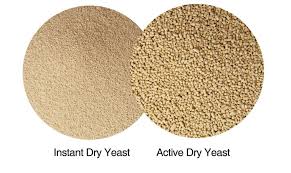 | 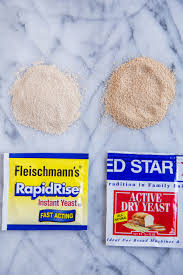 |
Yeast Uses
Yeast is used in baking bread. There are a few dessert recipes that call for yeast such as Christmas bread, sweet rolls, and bee sting cake. It’s also essential for beer production.
Point to remember while using Yeast: –
- Yeast needs warm temperatures to activate, so when placing the dough to rise, make sure it is sitting in a place that is 70 to 80 degrees Fahrenheit. And if your recipe includes a lot of eggs, butter, sugar, and milk, you may need a little more patience; these ingredients slow down the leavening process. If not used right away, fresh yeast can be stored in the refrigerator for up to only three days, so it should be bought in amounts that will be used quickly.
- The fresh yeast cake has a stronger smell than dry yeast. It is light beige in color and soft and crumbly in texture. Since it is highly perishable, fresh yeast cakes are stored in the dairy case near the butter.
- Once exposed to the air, the yeast should be stored in the refrigerator. You can store yeast in the freezer, which will pause its activity and prolong its shelf life. Just be sure to place it in a well-sealed container before freezing.
Yeast Substitute
We can use baking soda as a substitute for yeast. To do this, we need to add an acid to the mixture. Use equal parts baking soda and lemon juice to equal the amount of yeast used in the recipe.
Sugar & salt
Culinary Uses of Sugar
Whether it’s in processed foods, raw fruit, or spooned into coffee, we eat sugar almost every day. When it comes to baking, though, the type of sugar we use—from the level of refinement to the size of the granules and even the plant it’s made from—suddenly makes a big difference.
What Is Sugar?
Sugars are a class of simple carbohydrate that includes glucose and fructose, which are found in fruit and honey, and lactose, which comes from milk, but the most common sugar in cooking is sucrose, aka table sugar. Sucrose is produced by green plants during photosynthesis and contains one glucose and one fructose joined together. It has a moderate level of sweetness, forms crystals easily, and has a strong affinity for water, making sucrose ideal for cooking and baking.
Where Does Sugar Come From?
Most commercially available sucrose comes from sugarcane. About 30% of the world’s refined sugar comes from sugar beets. Since refined sugar is about 99.85% sucrose, manufacturers rarely advertise whether their sugar originates from beets or sugarcane. (Or both!) Other sources of sugar include palm trees, which produce sap that can be up to 12% sucrose, and maple trees, which produce significantly less sucrose but are prized for their complex flavor.
How Is Sugar Made?
To make refined sugar, sugarcane or beets are first juiced, then boiled to evaporate the water. The resulting raw sugar is then clarified in centrifuges that spin the sugar at high speeds to remove the sticky brown syrup that coats sugar crystals, known as molasses, or treacle. Once the sugar has been refined, it’s further “decolorized” by granular carbon, a material similar to activated charcoal.


Types of White Sugar-
| Granulated sugar: – It is also known as table sugar, is a white sugar with mid-size crystals that has had all its molasses removed, making it 99.85% sucrose. It’s the most common type of sugar used in baking, and as a sweetener for tea and coffee. | 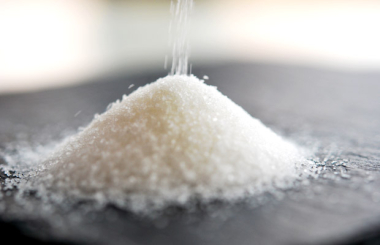 |
| Powdered sugar: –It is also known as confectioner’s sugar, icing sugar, or fondant sugar, is an extremely fine-ground white sugar with a texture that’s soft and powdery, not granular. Powdered sugar contains around 3% starch (to prevent clumping) and is used to making frosting and sifted over souffles and crepes. | 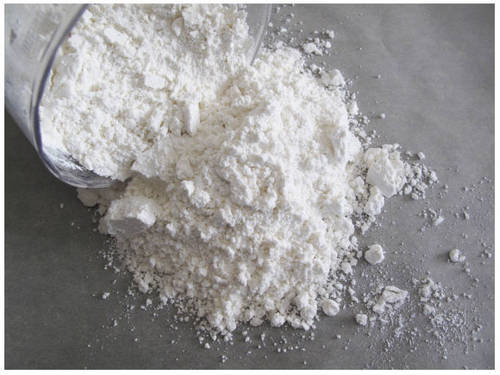 |
| Coarse sugar: – It is also known as sanding sugar, has large crystals and is used for decorating baked goods. It’s made from the purest white sugar and sometimes even washed with alcohol to further refine. The larger crystals are more heat-resistant, so they’ll keep their texture and color after baking. White sugar with the largest granules is called pearl sugar and is used as a crunchy coating for soft buns and Liege waffles. | 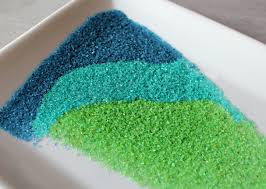 |
 | |
| Caster sugar: – It is also known as, extra-fine sugar or caster sugar, is white sugar with the very small crystals. It’s used in meringues and other delicate desserts because its crystalline surface helps aerate fat and eggs during whipping and creaming |  |
| Confectioners’ Sugar (powdered sugar):- This sugar has been mechanically crushed into a fine powder. An anti-caking agent, such as calcium phosphate or corn starch, is usually added to prevent clumping. Because it dissolves almost instantly in liquids, confectioners’ sugar is most useful in icings, syrups, and other desserts. |  |
| Lump Sugar (sugar cubes):– Lump sugar is regular white table sugar that has been pressed into lumps for convenient measuring. Lump sugar and sugar cubes are most often used in beverages such as coffee and tea. The lump or cube formation is usually held together by a small amount of sugar syrup. |  |
| Brown sugar:- is made of crystalline sucrose combined with a small amount of molasses, which is responsible for its characteristic color and rich flavor. It’s produced in major sugar-producing areas of the world. Brown sugar’s use is widespread because it contributes a dark sweetness to baked goods. It’s used in cooking as well, including sweet sauces and glazes for savory dishes. |  |
| Molasses is the dark, sweet, syrupy by product made during the extraction of sugars from sugarcane and sugar beets. molasses is used in holiday baked goods like gingerbread as well as baked beans, barbecue sauce, and other dishes that benefit from its dense sweetness. molasses can be used as a pancake syrup or stirred into hot cereals and oatmeal. |  |
Cooking stages of Sugar:-
- Thread Stage of Sugar: –
Temperature of sugar should be between (230° F–235° F) , sugar concentration: 80% At this relatively low temperature, there is still a lot of water left in the syrup. When you drop a little of this syrup into cold water to cool, it forms a liquid thread that will not ball up. Cooking sugar syrup to this stage gives you not candy, but syrup—something you might make to pour over ice cream.
- Soft-Ball Stage of sugar
Temperature of sugar should be between (235° F–240° F), sugar concentration:85%. At this temperature, sugar syrup dropped into cold water will form a soft, flexible ball. If you remove the ball from water, it will flatten like a pancake after a few moments in your hand. Fudge, pralines, and fondant are made by cooking ingredients to the soft-ball stage.
- Firm-Ball Stage of Sugar
Temperature of sugar should be between (245° F–250° F), sugar concentration:87%. Drop a little of this syrup in cold water and it will form a firm ball, one that won’t flatten when you take it out of the water but remains malleable and will flatten when squeezed. Caramels are cooked to the firm-ball stage.
- Hard-Ball Stage of sugar
Temperature of sugar should be between (250° F–265° F) , sugar concentration:92%. At this stage, the syrup will form thick, “ropy” threads as it drips from the spoon. The sugar concentration is rather high now, which means there’s less and less moisture in the sugar syrup. A little of this syrup dropped into cold water will form a hard ball.
If you take the ball out of the water, it won’t flatten. The ball will be hard, but you can still change its shape by squashing it.
Nougat, marshmallows, gummies, divinity, and rock candy are cooked to the hard-ball stage.
- Soft-Crack Stage of sugar
Temperature of sugar should be between (270° F–290° F) , sugar concentration:95%. As the syrup reached soft-crack stage, the bubbles on top will become smaller, thicker, and closer together. At this stage, the moisture content is low. When you drop a bit of this syrup into cold water, it will solidify into threads that, when removed from the water, are flexible, not brittle.
- Hard-Crack Stage of sugar-
Temperature of sugar should be between (300° F–310° F), Sugar concentration:99%. The hard-crack stage is the highest temperature you are likely to see specified in a candy recipe. At these temperatures, there is almost no water left in the syrup. Drop a little of the molten syrup in cold water and it will form hard, brittle threads that break when bent. Toffee, nut brittles, and lollipops are all cooked to the hard-crack stage
- Caramelizing of Sugar:- 320° F & more
Heat a sugar syrup to temperatures higher than any of the candy stages, you will be on your way to creating caramelized sugar (the brown liquid stage)—a rich addition to many desserts.
Culinary Uses of Salt
Salt is a mineral consisting primarily of sodium chloride (NaCl), a chemical compound belonging to the larger class of salts; salt in its natural form as a crystalline mineral is known as rock salt. Salt is present in vast quantities in seawater, where it is the main mineral constituent.
Salt is an essential seasoning that has been treasured throughout culinary history. Today, there are myriad types of salts, each with its own unique characteristics and specific culinary applications.
| Table salt:- is the standard salt, with small crystals designed to fit through the tiny holes in salt shakers. Iodized salt is a form of table salt that has had iodine added to it to prevent a disease called goiter. Besides contributing flavor, salt reacts with the glutens in wheat to make the dough more elastic. Moreover, its small crystals help it to dissolve in the dough, making it the preferred form of salt to use in making bread and other baked goods. | 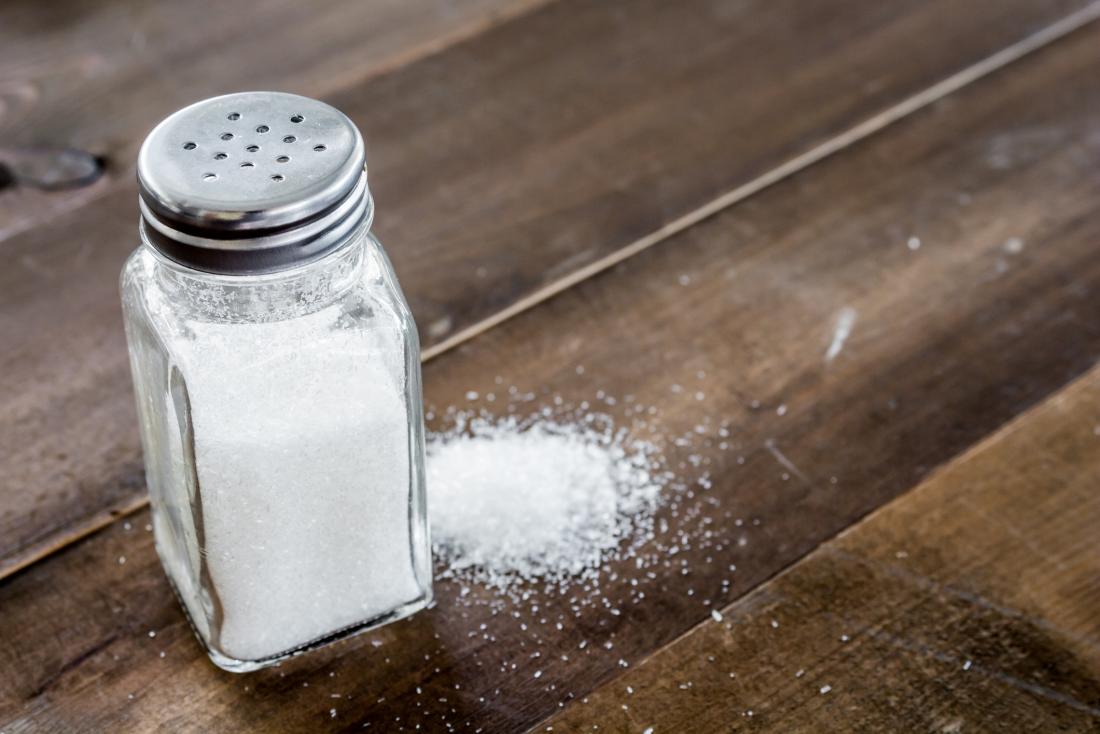 |
| Kosher salt is a coarse-grained salt that has a cleaner, lighter taste than ordinary table salt, and whose larger crystals make it better at adhering to foods and for making spice rubs and seasoning blends. kosher salt is free of additives. Kosher salt’s larger crystals make it half as salty by volume compared with table salt. | 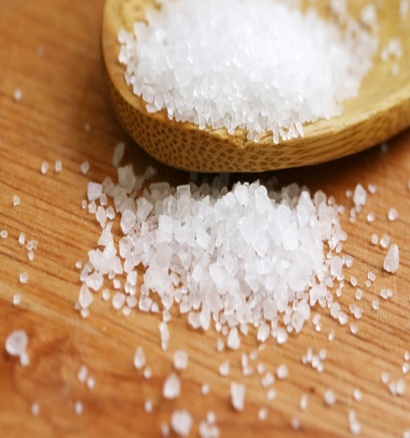 |
| Sea Salt;-sea is the main source of the world’s salt, of course, but there are also underground salt deposits that are mined to produce salt for food. Sea salt is generally better used as a garnish or condiment than as the main source of seasoning in a dish. |  |
Functions of Salt in Food
Salt is perhaps most well known as a food preservative and flavoring agent. It has been used to preserve food for many thousands of years and is the most common seasoning. But salt also plays other, lesser-known roles in the food we eat as an essential nutrient, providing flavor and texture, and enhancing color. For these reasons, salt is used in food production, which is why the sodium content of processed foods is so high.
- A Food Preservative
Salt-curing meat and other foods are the oldest methods of food preservation, and it was heavily used before refrigeration was available. Microbes that can spoil food need moisture to grow; salt acts as a preservative by drawing moisture out of the food. Many disease-causing microbes are also simply unable to grow in the presence of salt. When salt is mixed with water, it is called brine. Brining is soaking food in heavily salted water, which preserves and flavors food. Pickling, for example, is a form of brine.
- A Texture Enhancer
Most people do not realize that salt plays a large role in creating texture in food. When making yeast bread, for example, the amount of salt greatly affects the rate of yeast fermentation and gluten formation, both of which will significantly affect the bread’s final texture.
Salt also has a profound effect on the gelatinization of proteins, which occurs in cheese production and many processed types of meat such as sausage, bologna, and ham. In processed meat products, salt helps retain moisture, and so less saturated fat is needed.
When a steak is salted at the right time, it will encourage the meat to release more liquid, resulting in a juicy (and flavorful) steak. Large salt crystals are also often used to add a crunchy texture, as with soft and hard pretzels.
- A Flavor Enhancer
Salt acts in multiple ways to enhance the flavor of food. Not only does it create a “salty” flavor element, one of the most desired tastes by humans, but salt can also affect other flavors, such as sweet and bitter. In small amounts, the salt will intensify sweetness, so it is sometimes sprinkled on fresh fruit or added to candies like caramel. Salt can also counteract bitter flavors in food—it is often used to “de-bitter” cruciferous vegetables (like broccoli) and olives.
- A Nutrient Source
Pure table salt is comprised of approximately 40 percent sodium and 60 percent chlorine. Sodium is needed to help relax and contract muscles, conduct nerve impulses, and sustain the proper balance of minerals and water in the body.
- A Binder
Because salt helps form protein gels, it can be used as a binding agent. When salt is added to foods such as sausage or other processed meats, it causes gelatinization of proteins which then hold the product together.
Oxidizing Agents-
To produce a variety of quality breads, optional ingredients are required. They result in uniformity of products and efficiency of operations, assist in increasing the tolerances of doughs due to production variables, and help to satisfy the demand for variety in the flavor and taste of breads.
What are Oxidizing Agents?
Oxidizing agents, or oxidizers, are used to improve the mixing and dividing properties of bread dough.
- They enhance gluten reformation, which helps control dough strength and elasticity.
- Used as dough conditioners, oxidizing agents are a necessity in the high-speed production of bread.
Dough Improvers
It is usually mixture of several inorganic salts together with starch or flour as an extender. Gluten oxidizing agents such as potassium bromate, potassium iodate or calcium peroxide. Calcium salts usually as phosphate or sulphate which corrects any lack of hardness in dough water and provide buffering action to partially offset alkaline condition of water. Ammonium salts supply nitrogen which can be used by yeast for protein building.
Dough Strengthening Enzymes strengthen doughs by breaking down the pentosans present in flour and improve the baked product
Oxidizing Agents– Proper use of oxidizing agents results in larger volume, brighter crumb, better texture and improved appearance of finished loaf, e.g. potassium bromate, calcium oxide and potassium iodate.
Yeast Foods- Use of ammonium salts, phosphates and sulphate in dough improvers and yeast foods improves the fermentation capacity of yeast in dough.
What Is Baking soda & Baking Powder?
Baking Soda-bicarbonate of soda or sodium bicarbonate.
Baking soda, a staple leavening agent, makes baked goods rise. Known chemically as bicarbonate of soda or sodium bicarbonate, it can stand alone in some recipes, but it also adds the alkaline ingredient to baking powder, which includes the acid necessary to trigger the reaction that creates the lift. Baking soda used separately must be combined in a recipe with an acid ingredient such as brown sugar, vinegar, honey, or buttermilk to work.
Baking soda, an alkaline compound, produces carbon dioxide bubbles when combined with an acid. The bubbles get trapped, causing dough or batter to expand, or rise. This creates an airy texture in pancakes, cakes, bread, and other foods. When mixed with acidic ingredients such as buttermilk, vinegar, yogurt, or lemon juice, the baking soda releases carbon dioxide.
Baking Powder-
Baking powder combines an acid (most commonly monocalcium phosphate, sodium aluminum sulfate, or cream of tartar) and sodium bicarbonate, an alkali more commonly known as baking soda. Water (or other liquid) causes a chemical reaction that produces carbon dioxide, which gets trapped in tiny air pockets in a dough or batter. Heat releases additional carbon monoxide and expands the trapped carbon dioxide gas and air to create steam. The resulting pressure expands the trapped air pockets, causing the dough or batter to rise.
Baking Soda vs. Baking Powder
Baking soda is pure sodium bicarbonate. Baking powder contains sodium bicarbonate, but also includes an acidifying agent and a drying agent.

- Baking soda, an alkaline powder, is pure sodium bicarbonate; it requires the addition of an acid to create the desired reaction. Often, recipes pair baking soda with buttermilk, lemon juice, or vinegar.
- Baking soda begins to release gas upon activation, so items prepared with baking soda alone must be baked immediately to gain the benefits.
- Baking powder is sold as single- or double-acting. Single-acting powders are activated when they get mixed with moist ingredients, and like with baking soda, must be baked immediately, before the gas dissipates.
- Double-acting powder contains a second leavening agent activated by heat, so items containing this ingredient can rest or chill before baking and will still rise in the oven.
